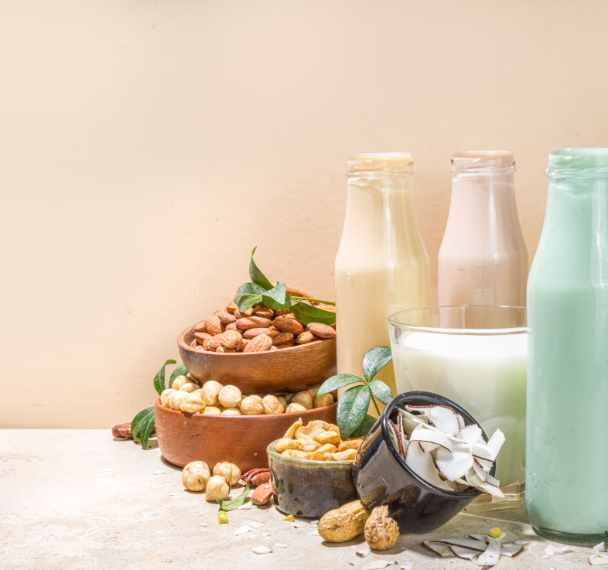From Field to Cup: What does Matcha taste like?
Apr 30, 2024
Introduction
With its eye-catching colour, health benefits, and unique flavours, matcha has gained worldwide popularity and continues to be a trendy flavour that keeps on intriguing and sparks the curiosity of consumers.
In this blog post, we will explore the origins of matcha, its different grades, flavour profile, and pairing options, so you can successfully incorporate it into your future R&D project and product development process.
What is matcha?

Matcha translates to “ground tea” as it is made from green tea leaves that have been ground into a fine powder.
Matcha changed over the centuries, from a tea monks would drink during meditation, to a more elevated drink used in the Japanese tea ceremony, to finally a drink that can be enjoyed by everyone worldwide, not only as a drink but also in desserts.
While most teas are infused into water, matcha is directly mixed into it. And this is the original way tea was consumed in Japan, inherited from Chinese monks.
The traditional way to make matcha involves using a bamboo matcha whisk, a matcha bowl, and a bamboo spoon.
The bamboo matcha whisk, also known as Chasen, is designed with hundreds of small bristles that move through the water to aerate the tea, resulting in a nice foam on top. Despite being a tool used for centuries, it remains the best option for achieving a frothy matcha consistency.
The matcha bowl, also known as a Chawan, is specifically designed with steeper sides to conveniently whisk the tea without any spillage. Additionally, it is crafted from a thick clay material that effectively retains the warmth of the matcha for a longer duration.
The bamboo spoon, called Chashaku, has a vertical design, which makes it convenient to scoop tea from cylindrical containers such as matcha tins or tea caddies.
When whisked properly, it creates a velvety texture and produces a light foam on top, and a smooth finish, enhancing the drinking experience and opening up the flavours.
To create matcha, the farmers shade the tea plants. Like most green teas, after being harvested, the leaves are then steamed to avoid oxidation. Then, the stems are removed from the matcha leaves and the leaves are carefully ground into a fine powder.
There are lots of health benefits associated with matcha, mainly because the entire tea leaves are consumed rather than just being infused. Matcha has therefore more caffeine, theanine and antioxidants compared to standard teas.
Matcha powder grades
The First Harvest Ceremonial grade is the highest grade of matcha, meant to be used for special tea ceremonies but it is also becoming popular for tea consumers to prepare at home.
As the name would suggest, the tea is made from the first harvest of the tea plants and only the top leaves which have the greenest colour, highest nutrient content and the lower bitterness.
This matcha grade goes through a very intricate process, making it a very expensive tea.
The Regular ceremonial grade, also called Premium grade, is a more budget-friendly option as it is made from later harvests to cut down on costs. This matcha is smooth enough and not too bitter to drink on its own.
Sometimes you can find a Latte grade which is an inexpensive option. It is intended to be mixed with milk and sugar, as its flavours are too strong and too bitter to drink on its own.
This matcha is usually made from later harvests, but the stems may not be removed or the tea plant shaded less longer compared to the ceremonial grades.
The Cooking or Culinary grade is the lowest grade of matcha and the cheapest. It is made from lower grade leaves and has a very strong bitterness. However, the bitterness disappears when used with desserts or pastries which are very high in sugar, creating a pleasant sweet and creamy matcha flavour.
Matcha Flavour profile
In terms of flavours, Matcha is stronger and more complex than standard green tea and has a smooth velvety texture.
For me, most of the matcha I have tried tasted umami, hay, leafy and earthy.
Matcha tasted from different areas of Japan:
🔸Standard Latte Grade Matcha
🔸Chanoka Silver Matcha
🔸Matcha Washimine
🔸Henta Matcha
🔸Masudaen Superior Matcha
🔸Matcha Seisui
Matcha flavour pairing

You can use actual matcha or matcha flavouring, especially if you are currently using green tea or green tea flavourings.
Matcha has a powerful taste that can clash with other strong flavours. It needs something sweet and subtle.
Matcha can be paired with:

Conclusion
As an entrepreneur, startup founder, or CEO of an SME in the food and beverage industry, incorporating matcha into your products can make you stand out.
Not only does matcha bring a vibrant colour and unique flavour profile, but it also comes with nutritional benefits.
However, the taste of matcha on its own can be polarising for some consumers. The key is to pair matcha with mellow and familiar flavours like banana, vanilla, oat milk, pear, or almond.
This combination not only enhances consumer acceptance but also creates a sense of excitement and curiosity.
Link to related blogs you may enjoy
🔶Beyond the Hype: What does ube truly taste like?
🔶 A Taste of Japan: What does yuzu actually taste like?
🔶 Beyond the Bar: 5 Eye-Opening Facts About Cacao and Chocolate flavours
🔶 Finding Harmony in Chaos: The Art and Science of Flavour Pairing
References
Where Did Matcha Originate? The Answer is Complicated, 2023, Nioteas, https://nioteas.uk/blogs/matcha/where-did-matcha-originate
The Origins and History of Matcha, Matcha Outlet, https://matchaoutlet.com/pages/the-origins-and-history-of-matcha#:~:text=Matcha%2C%20or%20green%20tea%20powder,it%20today%20was%20first%20documented.
The history of matcha, Moya, https://moyamatcha.com/en/moya-matcha/history-of-matcha/
Britanica, Matcha, https://www.britannica.com/topic/matcha
The history of matcha, Matchaful, https://www.matchaful.com/pages/the-history-of-matcha
Kochman J, Jakubczyk K, Antoniewicz J, Mruk H, Janda K., Health Benefits and Chemical Composition of Matcha Green Tea: A Review. Molecules, 2020, https://www.ncbi.nlm.nih.gov/pmc/articles/PMC7796401/








